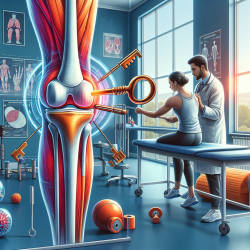Introduction
The COVID-19 pandemic has posed unprecedented challenges to nursing education, necessitating innovative strategies to maintain stability and growth. A recent study by de Tantillo and Christopher (2020) explores the application of the National Incident Management System (NIMS) as a guiding framework for nursing schools to navigate these turbulent times. This blog delves into the key components of the NIMS framework and how it can empower nursing educators and administrators to improve their practice and outcomes.
The NIMS Framework: A Blueprint for Resilience
The NIMS framework, originally developed for disaster response, comprises five essential components: Preparedness, Communication/Information Management, Resource Management, Command, and Ongoing Management/Maintenance. These elements provide a comprehensive approach to managing crises and ensuring continuity in nursing education.
Preparedness: Building a Strong Foundation
Preparedness is crucial for ensuring that nursing schools can swiftly adapt to changing circumstances. This involves developing coordinated emergency plans that prioritize mental health support for students and faculty. Regular evaluation and revision of these plans are necessary to address evolving needs and challenges.
Communication/Information Management: Keeping the Lines Open
Effective communication is vital during crises. The NIMS framework emphasizes the importance of reliable and transparent information dissemination. Nursing schools should leverage digital platforms to maintain a constant flow of communication, ensuring all stakeholders are informed and engaged.
Resource Management: Navigating Limited Resources
Resource management involves the strategic allocation of personnel, equipment, and supplies. Nursing schools must develop contingency plans to address potential shortages and ensure the continuity of education. This includes providing faculty with the necessary training to adapt to remote teaching environments.
Command: Establishing a Unified Structure
The Command component focuses on maintaining a cohesive organizational structure. Clear communication channels and defined roles are essential for effective decision-making and resource distribution. Nursing schools should strive to create an inclusive environment where all voices are heard.
Ongoing Management/Maintenance: Adapting to the New Normal
As the pandemic continues to impact education, nursing schools must remain flexible and responsive to new challenges. This includes supporting faculty and students facing financial hardships and ensuring access to necessary resources for continued learning and development.
Professional Development: A Continuous Journey
Ongoing professional development is key to maintaining readiness for future crises. The Comprehensive Vulnerability Management paradigm and resources from organizations like the Emergency Management Institute offer valuable training opportunities. These tools equip nursing educators with the skills needed to navigate complex emergency scenarios.
Conclusion
Implementing the NIMS framework in nursing education can significantly enhance resilience and preparedness. By embracing these strategies, nursing schools can ensure the seamless continuation of education and professional development, even in the face of global health crises. For those interested in exploring this topic further, the original research paper by de Tantillo and Christopher provides a detailed template for integrating NIMS into nursing education.
To read the original research paper, please follow this link: Implementing the National Incident Management System at schools of nursing in response to COVID-19?










